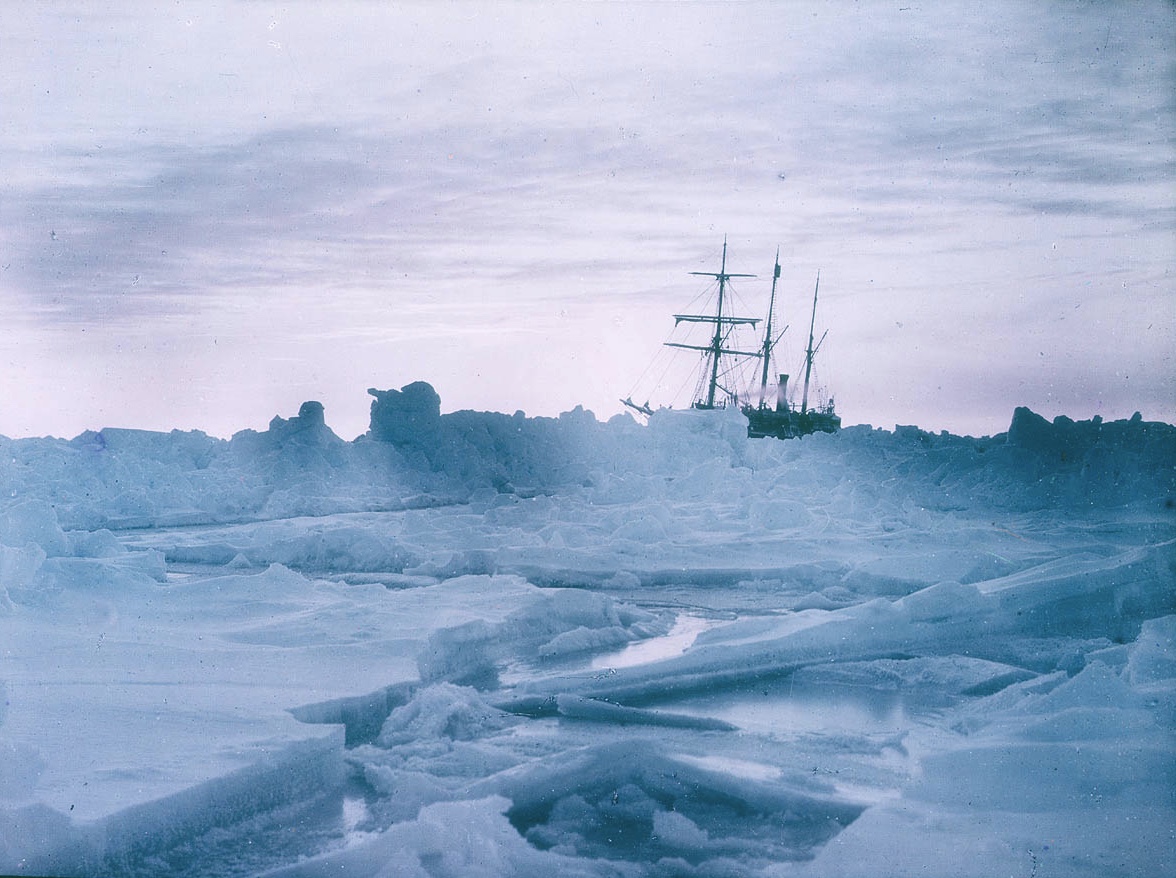New expedition will search for Shackleton's Endurance deep below Antarctic waters
The wreck has been lost for more than a century.

A team of scientists has announced an expedition to find the remains of Ernest Shackleton's long-lost ship, the Endurance, below the dark and icy waters of the Antarctic Ocean.
Shackleton and his crew abandoned the ship in 1915 after it was crushed by ice. The Endurance now lies somewhere at the bottom of the Weddell Sea, a large bay in the western Antarctic. Its exact location remains unknown, but a new expedition plans to find it.
The Endurance22 expedition, slated to begin in February 2022, will navigate the treacherous southern waters, slamming through miles of pack ice in search of locations for state-of-the-art submarines to scan the ocean floor.
Related: In photos: Searching for Shackleton's Endurance shipwreck
If the expedition scientists find the lost ship, they plan to survey and film the wreck. But they won't take any artifacts, as the vessel is protected under the international Antarctic Treaty. The team's 2019 attempt to locate the Endurance was called off due to extreme weather and a lost submarine. This time, the team is even more determined to find the remains of the legendary ship.
"Attempting to locate the wreck of Endurance, something long thought impossible and out of reach, is an immensely exciting prospect," Mensun Bound, Endurance22's director of exploration, said in a statement. "Given the harshness of the Antarctic environment, there are no guarantees of success, but we remain inspired by the great Antarctic explorers and embark on Endurance22 with high hopes. With the best possible technology and a world-leading exploration team, we hope and pray that we can achieve a landmark moment in polar history."
Get the world’s most fascinating discoveries delivered straight to your inbox.
Shackleton's herculean attempt to cross the South Pole is perhaps the most legendary story from the "heroic age" of polar exploration. Embarking from the island of South Georgia, the Endurance worked its way south through pack ice for weeks before becoming trapped just off the Caird Coast. The men drifted for more than a year, first aboard the ship and then on top of the ice floe itself after the Endurance was crushed and sank. As time wore on, they resorted to shooting and eating their expedition dogs to survive.
Penguins and seals were next on the menu for the starving explorers after, using intact lifeboats from the wreck, they made landfall at Elephant Island. It was from this uninhabited rock that Shackleton launched his sturdiest lifeboat, the James Caird, taking five other men with him on a return trip to South Georgia island through the stormy, freezing seas. The men were at constant danger of being capsized against rocks by the hurricane force winds, the same winds which the crew later learned had sunk a 500-ton steamer, before landing successfully at their destination fifteen days later. Shackleton returned to Elephant Island shortly after aboard a rescue ship and all 28 members of his crew were saved.

The Endurance now lies below nearly 10,000 feet (3,000 meters) of dark water, its timbers likely well preserved by the absence of light and low oxygen content. The location where it sank, logged at the time by ship' captain Frank Worsley, is well known. The real difficulty for the Endurance22 team will be in bulldozing through miles of thick ice in the Weddell Sea.
Although climate change will make the ice floe easier to break through than in Shackleton's day, arriving at the location his ship sank at is still a challenge. The scientists intend to get there by ramming the ice with the icebreakers fitted to their ship, the South African SA Agulhas II. Once the researchers are sufficiently close to the documented site of the wreck, they will lower a Saab Sabertooth autonomous submarine into the freezing water and use satellite radar imagery to navigate it to the wreck.
The oxygen levels at the wreck's location are high enough to sustain life, so the team suspects that a rich and strange ecosystem may have bloomed around the sea-changed Endurance. The researchers said there is even a possibility that they will discover new species.
Donald Lamont, chairman of the Falklands Maritime Heritage Trust, which is funding the expedition, believes broadcasting the wreck's discovery could have implications for future explorers as well.
"We hope that bringing this story to new generations will inspire them to explore, to overcome whatever challenges they may face, and to understand more about the Antarctic environment and how important it is even to those of us who live thousands of miles to the North," Lamont said.
Originally published on Live Science.

Ben Turner is a U.K. based writer and editor at Live Science. He covers physics and astronomy, tech and climate change. He graduated from University College London with a degree in particle physics before training as a journalist. When he's not writing, Ben enjoys reading literature, playing the guitar and embarrassing himself with chess.


